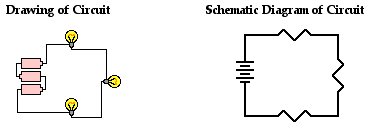Summary:
This week in science we were learning about electricity. Electricity is the flow of electrons. Electricity flows in a circle, but it does not have to be a circle exactly. To complete the circuit, the beginning of the wire and the end of the wire have to connect.
Electricity is lazy and it does not like to go through light bulbs because it is like a traffic jam in there. Only one electron can go in at a time. This is because the filament is really, really thin. The filament is a wire inside of the bulb that lights it up. We are forcing the electricity to go through when there is only one pathway.
Short Circuits:
A short circuit is a circuit that does not have any work to do. Another example is a circuit without a lightbulb. That can be dangerous because there is nothing for the electrons to light up so it circles faster, and faster in the circuit getting hotter and hotter. Eventually, this can cause an explosion!
The last example as a short circuit is a circuit that has a battery but does not light up. How is this possible. This is possible if there are 2 pathways that the electricity can go through, but in one of them, it does not have to go through the light bulb. It does not have to do work. Look at the image to the right. This is also pretty dangerous because it can explode.
Parts of a circuit:
There are a few parts to a circuit. They include the power source (battery), conductor (wires) and whatever you want to power.
The first part of the circuit is the power source. Also known as the battery or the load. The battery is important because without it you will not be able to power whatever you want to power. All the electrons come from the battery.
The next part are the conductors. These are also known as wires. The electrons travel through the wires into whatever you want to power. The wires are important because without them the electrons won't be able to get to whatever you want to power.
The last part is whatever you want to power. This can be lights, but it can also include fans, electronics, electric cars, us, and much more! Without this part, you will make a short circuit.
SP2: Developing and Using Models:
This week we drew models of electric circuits. We did this so we had a better understanding of how they look and what they are. We drew short circuits, series circuits, and just regular circuits. We also learned how to draw batteries in a circuit.
Conclusion:
I hope you learned something about electricity from my examples. I really liked how we drew models this week because it gave me more understanding of how different circuits look, and behave.







Comments
Post a Comment